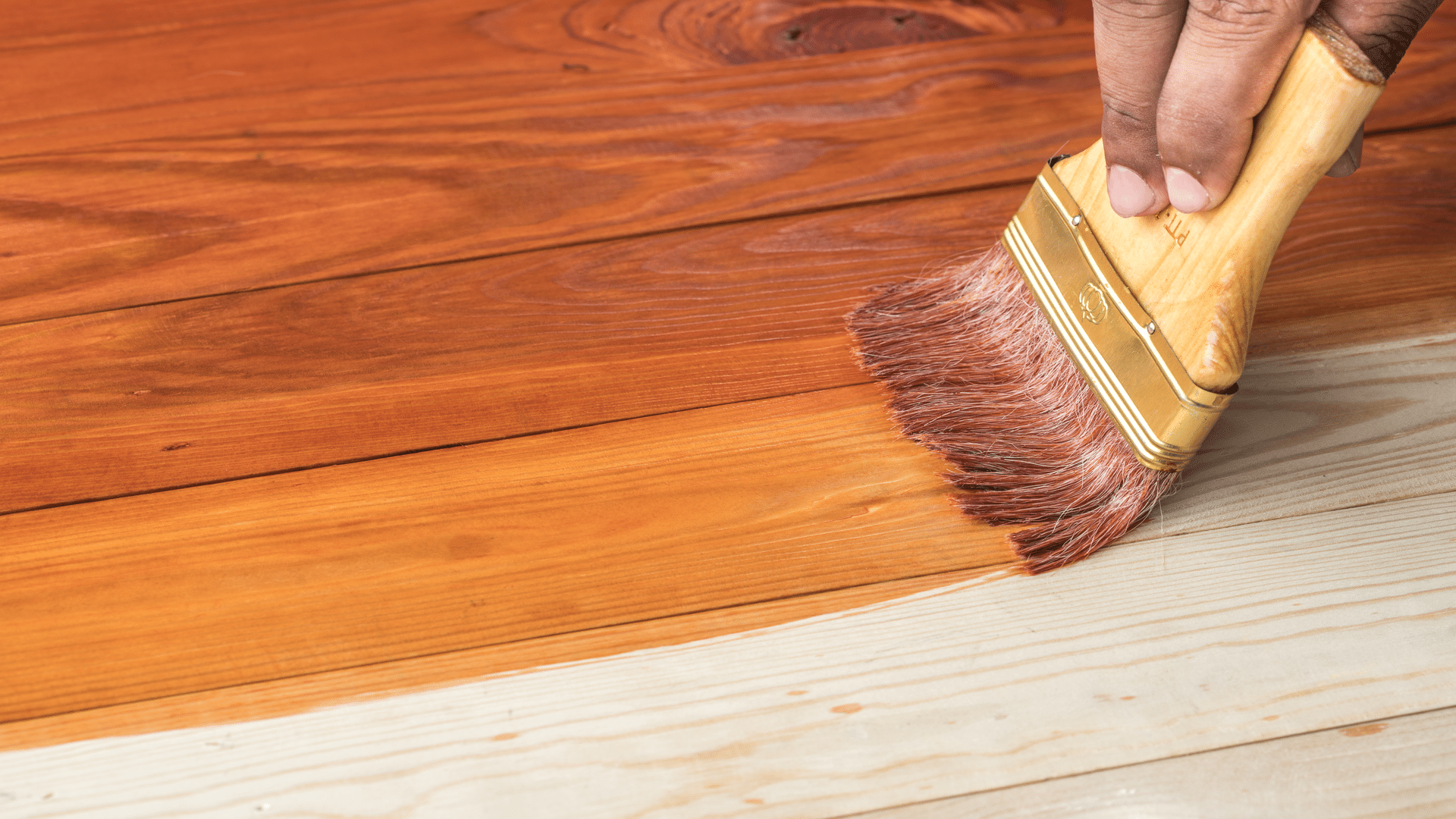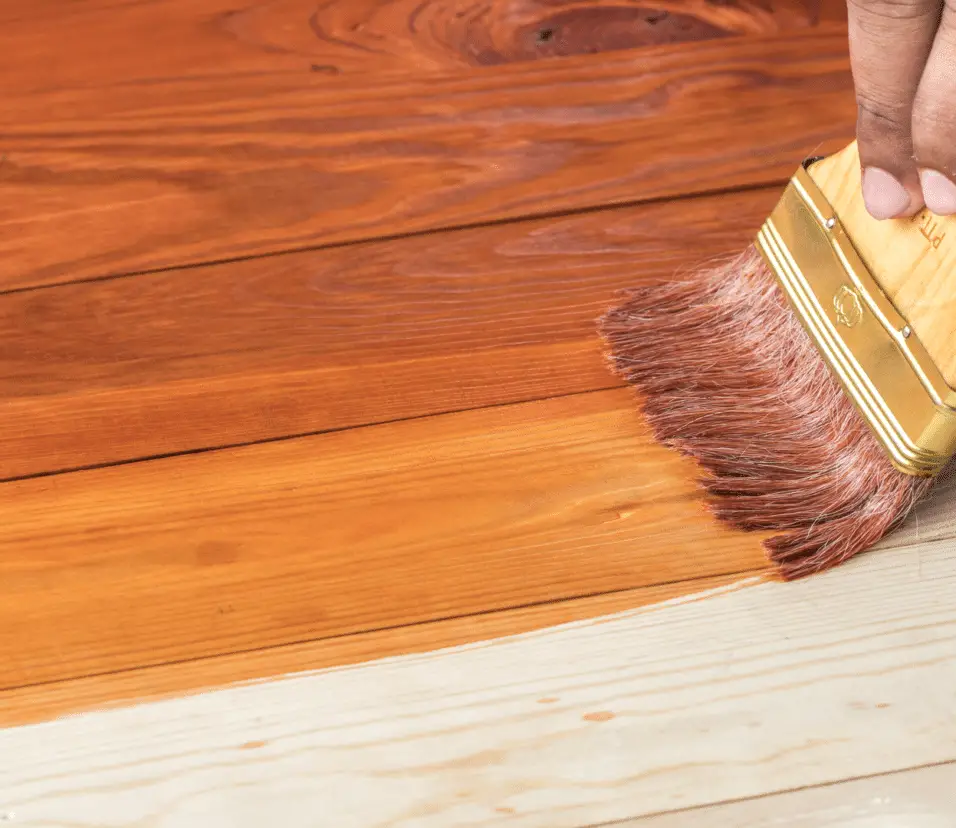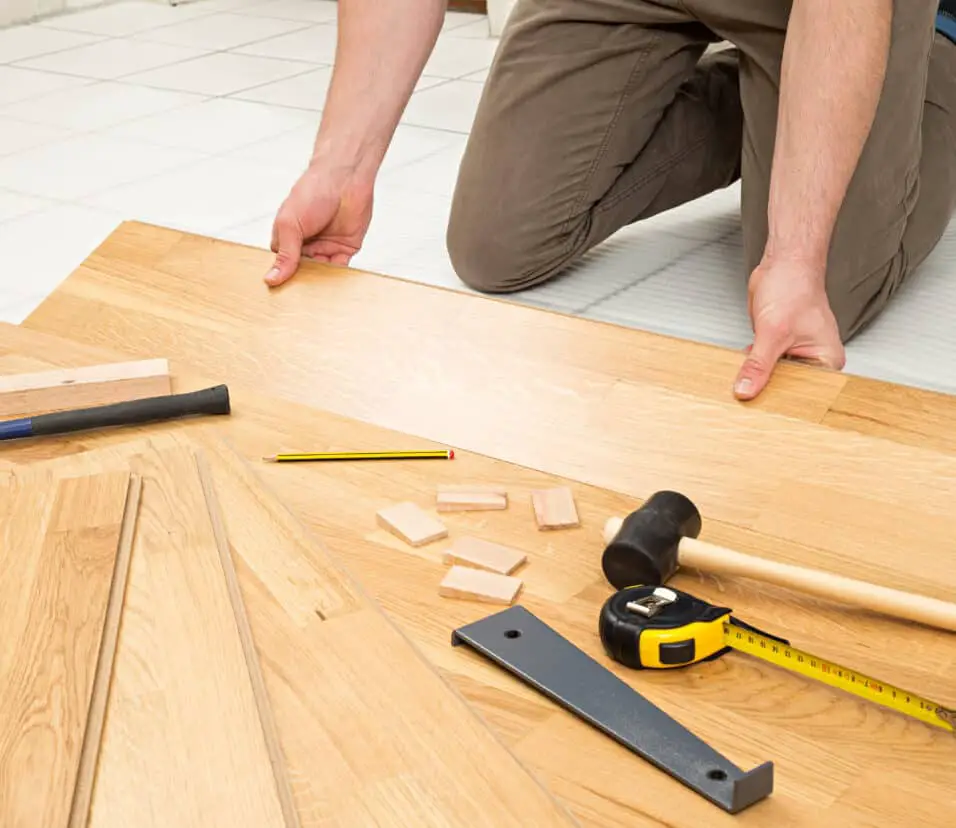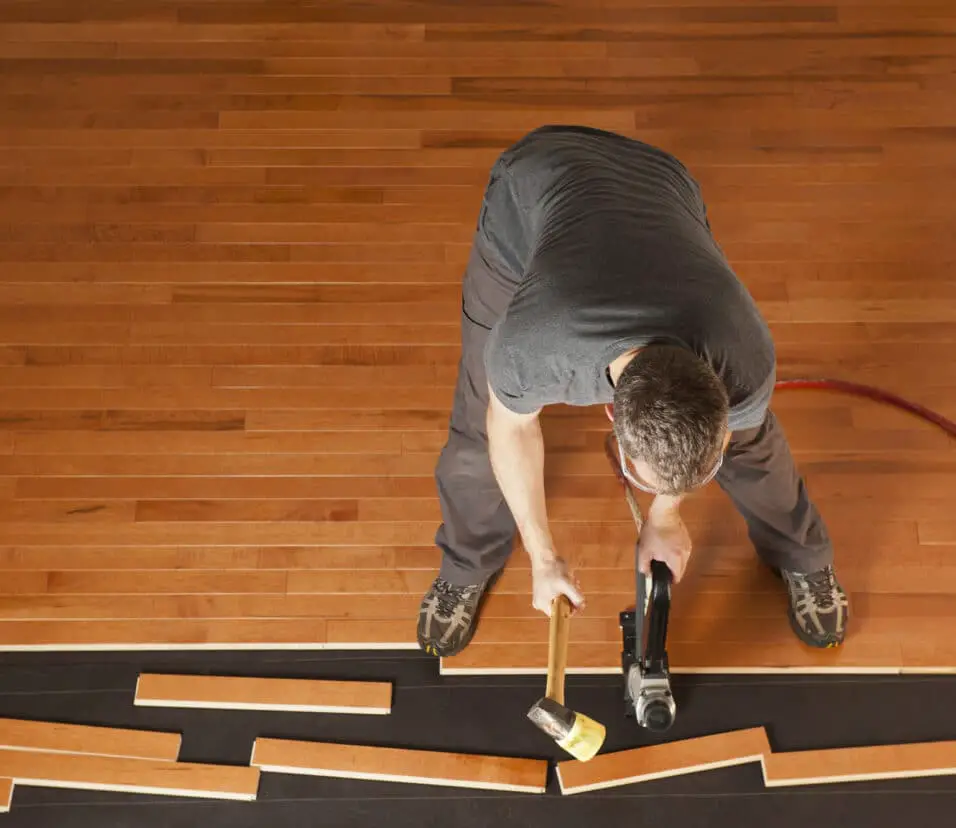How To Remove Paint Splatter From Wood Floors
Introduction
How To Remove Paint Splatter From Wood Floors: When it comes to maintaining the beauty of your wood floors, dealing with paint splatter can be a daunting task. Whether it’s a result of a DIY painting project or accidental spills, removing paint splatter from wood floors requires careful attention and the right techniques. In this guide, we present three paraphrased introductions, each outlining effective methods to safely and efficiently eliminate paint splatter without damaging your cherished wood flooring.
Discovering paint splatter on your beloved wood floors can be disheartening, but fear not, as we’ve compiled a comprehensive resource to help you tackle this issue with confidence. In the following sections, we will explore three paraphrased introductions that outline step-by-step approaches and useful tips for successfully removing paint splatter while preserving the integrity of your wood flooring.
Maintaining the pristine appearance of your wood floors can become a challenge when confronted with unwanted paint splatter. Rather than resorting to drastic measures, it’s essential to know the appropriate methods for paint removal to avoid causing further damage. This guide encompasses three paraphrased introductions, each shedding light on effective and gentle techniques to remove paint splatter from wood floors, allowing you to restore the natural beauty of your cherished flooring.

How do you remove dried paint splatter from hardwood floors?
Mix Isopropyl Alcohol and Lemon Juice
If soap and water didn’t work, mix a solution of three parts isopropyl (rubbing) alcohol and one part lemon juice in a small bowl. Begin by carefully scraping off as much of the paint as possible with a putty knife without harming the floor finish.
Removing dried paint splatter from hardwood floors requires a delicate approach to avoid damaging the wood’s surface. Here’s a step-by-step guide to help you effectively tackle the task.
Identify the paint type
Before proceeding, determine if the dried paint is oil-based or water-based. This information will dictate the cleaning method.
Scrape off excess paint
Gently use a plastic scraper or putty knife to carefully lift off any loose or dried paint without scratching the hardwood.
Test in a small area
Select an inconspicuous spot on the floor and test your chosen paint removal method to ensure it doesn’t cause discoloration or damage.
Water-based paint removal
If the paint is water-based, a mixture of warm water and mild dish soap can be used. Dampen a soft cloth in the solution, then gently rub the affected area, making sure not to saturate the wood.
Oil-based paint removal
For oil-based paint, you’ll need to use a stronger solvent like mineral spirits or paint thinner. Apply the solvent to a clean cloth and gently dab the paint splatter, being cautious not to over-saturate the wood.
Stubborn stains
For stubborn stains, try using a mixture of baking soda and water, creating a paste-like consistency. Apply the paste to the stain and let it sit for a few minutes before carefully scrubbing with a soft brush.
Clean and dry
Once the paint is removed, wipe the area with a damp cloth to remove any residue, and then dry it thoroughly.
Polish and protect
Finally, apply a hardwood floor polish or wax to restore the floor’s shine and add a layer of protection against future stains.
Remember, patience and gentle cleaning techniques are crucial to preserve the beauty and integrity of your hardwood floors while effectively removing dried paint splatters.
What removes paint splatters from wood?
Denatured alcohol, a clean rag, and a lot of patience can remove latex paint without damaging wood. Oil-based paint spatters require mineral spirits, but be careful not to soak the wood, as this will cause damage. Wipe thoroughly with clean water and dry once the paint is removed.
Removing paint splatters from wood can be a delicate task, as you want to avoid damaging the wood’s surface while effectively getting rid of the unwanted paint marks. Fortunately, there are several methods and products you can use to achieve this goal.
One of the simplest and gentlest approaches is to use a mixture of warm water and mild dish soap. Dampen a soft cloth with the soapy solution and gently rub the paint splatters, being cautious not to scrub too hard to prevent scratches. Another option is to use a mixture of baking soda and water, creating a paste that can be applied to the paint splatters and left for a few minutes before wiping it off.
For more stubborn paint splatters, you can try using denatured alcohol or mineral spirits. Apply a small amount of either substance to a clean cloth and gently rub the paint splatters until they begin to dissolve. Remember to test these solvents on a hidden area of the wood first to ensure they won’t cause any damage or discoloration.
In some cases, scraping the paint splatters with a plastic putty knife or carefully using a razor blade can be effective. However, exercise extreme caution to avoid gouging or scratching the wood.
What is the best paint remover for wood floors?
Motsenbocker’s LiftOff Latex Paint Remover
Motsenbocker’s Latex Paint Remover fits the bill nicely. It’s highly effective at removing old and new latex paint and latex enamel from a variety of surfaces, including walls, trim, molding, floors, wood, vinyl, tile, laminate, metal, brick, concrete, and vehicles.
When it comes to removing paint from wood floors, choosing the right paint remover is crucial to achieve the best results without causing damage. Several factors come into play, including the type of paint, the condition of the wood, and environmental considerations. One of the most effective and widely used paint removers for wood floors is a solvent-based paint stripper.
Solvent-based paint removers typically contain chemicals like methylene chloride or NMP (N-Methyl-2-pyrrolidone). They work by breaking down the paint’s bond with the wood surface, allowing for easier removal. However, it’s essential to use them with caution, as they can emit strong fumes and may be hazardous to health and the environment. Adequate ventilation and protective gear are a must when using such products.
For those seeking a safer alternative, citrus-based paint strippers are a viable option. These eco-friendly products utilize natural solvents derived from citrus fruits to remove paint effectively. While generally less harsh than solvent-based removers, they may require a bit more effort and time, especially with multiple layers of paint.
Can you remove dried paint from wood?
Wood. Just as with metal, paint can be removed from wood via: chemical strippers, heat, or sanding. If opting for chemicals, apply the product and let it set for a few minutes. Gently scrape it away with a putty knife or paint scraper (tip: thicken the stripper by coating it with sawdust for easier removal).
Yes, it is possible to remove dried paint from wood surfaces. However, the method you choose will depend on the type of paint, the age of the paint, and the condition of the wood. Here are some common techniques to consider:
Sanding
Sanding is an effective way to remove dried paint from wood. Use coarse sandpaper to strip away the top layers of paint, and then switch to finer grits for a smoother finish. Be cautious not to damage the wood surface while sanding.
Heat Gun
A heat gun can soften dried paint, making it easier to scrape off. Be sure to work in a well-ventilated area and wear protective gear. Use a putty knife or scraper to gently remove the softened paint.
Chemical Paint Strippers
There are various chemical paint strippers available that can break down and dissolve dried paint. Follow the manufacturer’s instructions carefully and use appropriate safety precautions.
Solvents
Some solvents like rubbing alcohol or mineral spirits can be effective in removing dried paint. Apply the solvent to a cloth and gently rub the paint until it starts to lift.
Before attempting any paint removal method, test it in a small inconspicuous area to ensure it won’t damage the wood. Additionally, if the wood surface is valuable or antique, it’s advisable to seek professional restoration services to avoid any potential harm. Regular maintenance and protective measures can also help prevent paint from adhering to wood surfaces and make future removal easier.

Will paint thinner remove paint from wood?
Paint thinner was not made to remove paint from wood; however, if you have newly painted oil-based paint, you can try to remove it with paint thinner and a wire brush. For all other paint removal projects, stick to using a paint stripper if going a chemical route to remove paint from the wood surface.
Paint thinner is often used as a solvent to thin oil-based paints and clean paintbrushes, but its effectiveness in removing paint from wood depends on the type of paint and the finish on the wood. If the paint on the wood is oil-based, paint thinner can be quite effective in breaking down and dissolving the paint, making it easier to remove.
However, when dealing with water-based or latex paint, paint thinner may not be as effective, as these types of paints do not dissolve easily in traditional paint thinners. In such cases, other methods like scraping, sanding, or using a specialized paint remover may be more suitable.
It is essential to exercise caution when using paint thinner on wood surfaces, as it can also strip away the wood’s natural finish or cause discoloration. Always test a small, inconspicuous area first to ensure that the wood can withstand the paint thinner without damage.
How do you remove paint and stain from wood?
You can remove stains, loose paint and varnish with a combination of sanding, scraping and chemical strippers. To remove finishes quickly from larger areas, use a random-orbit sander. Take care not to damage the piece by sanding too deeply. Use a fine-grit or medium-grit sandpaper.
Removing paint and stain from wood can be a challenging yet rewarding task, restoring the natural beauty of the wood beneath. Several methods can be employed, depending on the type of paint or stain and the condition of the wood.
One common approach is using chemical paint or stain strippers. These products work by breaking down the paint’s chemical bonds, making it easier to scrape or wash away. However, caution must be exercised when handling these chemicals, and proper safety gear should be worn.
For a more eco-friendly option, heat guns or infrared paint removers can be utilized. These tools soften the paint or stain, enabling it to be scraped off without the need for harsh chemicals. Nonetheless, one must be careful not to scorch the wood during the process.
Sandpaper is another reliable method for paint removal, particularly for smaller areas or intricate details. Coarse sandpaper can strip away layers of paint effectively, while finer grits can smoothen the wood’s surface.
Does vinegar remove wood finish?
Diluted vinegar can dissolve the finish that protects the wood and leave it looking cloudy, dull, or scratched. (The same goes for wood furniture.) Follow the manufacturer’s cleaning recommendations or pick a cleaner that’s made specifically for hardwood flooring.
Vinegar can indeed remove wood finish to some extent, but its effectiveness depends on the type of finish and the age of the wood. Vinegar is acidic, and its acetic properties can break down certain finishes, such as lacquer or shellac. When applied to the wood surface, vinegar gradually softens the finish, making it easier to remove with scraping or sanding.
However, not all wood finishes are susceptible to vinegar. Modern polyurethane or varnish finishes are more resistant to acidic substances like vinegar, making it less effective in these cases. Additionally, if the wood finish is old and has fully cured, vinegar may have limited success in removing it entirely.
It is essential to exercise caution when using vinegar on wood surfaces, as prolonged exposure or excessive use may damage the wood fibers or result in discoloration. Always conduct a spot test in an inconspicuous area before applying vinegar to the entire surface.
How do you remove paint from wood fast?
Paint strippers are solvents that soften the old finish for easy removal. They’re available as a liquid, gel or paste and are effective at removing paint from wood on large projects, curved shapes and fine details. Using paint stripper on rounded surfaces and tight areas is often easier and more effective than sanding.
Removing paint from wood can be a tedious task, but with the right techniques, it can be done efficiently and quickly. Here are some methods to help you remove paint from wood fast:
Heat gun
A heat gun is a powerful tool that softens the paint, making it easier to scrape off. Hold the heat gun a few inches away from the painted surface, and as the paint bubbles up, gently scrape it away with a putty knife. Be cautious not to damage the wood’s surface by overheating.
Chemical paint stripper
Paint strippers are effective at dissolving paint from wood. Apply the stripper following the manufacturer’s instructions, and once the paint softens, scrape it away with a paint scraper or putty knife. Remember to work in a well-ventilated area and wear protective gear.
Sanding
Sanding is a mechanical method to remove paint. Use coarse sandpaper or a power sander to strip away the paint layer by layer until you reach the bare wood. This method is ideal for smaller areas or when dealing with stubborn paint.
Pressure washer
For larger outdoor wood surfaces like fences or decks, a pressure washer can help blast away paint. Ensure you adjust the pressure to avoid damaging the wood.
Paint remover discs or wheels
These attachments for power drills can make paint removal faster. They are abrasive and can strip away paint effectively, but be cautious not to overheat the wood.
Chemical gel paint removers
Gel-based paint removers are suitable for vertical surfaces as they cling to the paint better. Apply the gel, wait for it to react, and then scrape off the softened paint.
Before attempting any paint removal method, test it on a small, inconspicuous area of the wood to ensure it won’t cause damage. Always wear appropriate safety gear and work in a well-ventilated space when using chemical-based products. With the right approach, you can restore the natural beauty of your wood surfaces efficiently and with less effort.

Conclusion
Effectively removing paint splatter from wood floors requires a combination of careful techniques and the right tools. The methods discussed in this guide offer practical and safe ways to restore the beauty of your wood flooring without causing damage. Remember to test any cleaning solution on a small, inconspicuous area before applying it to the entire splattered surface. Patience and gentle handling are key to preserving the integrity of your wood floors while achieving satisfactory results.
Concluding our exploration of how to remove paint splatter from wood floors, we emphasize the importance of approaching this task with caution and precision. By opting for the paraphrased methods and tips provided here, you can successfully eliminate unsightly paint splatter without compromising the quality of your wooden flooring. Always be mindful of the type of paint and finish on your floor, and choose the most suitable technique accordingly.
To wrap up, the process of paint splatter removal from wood floors necessitates a tailored approach to protect the flooring’s aesthetics and longevity. The paraphrased conclusions outlined in this guide equip you with valuable insights and steps to tackle this challenge effectively. Remember to consider the type of wood and paint involved, exercise patience during the cleaning process, and seek professional assistance if uncertain. With proper care and the right techniques, your wood floors can be restored to their former glory, showcasing their natural beauty once again.








